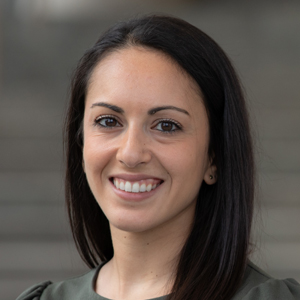Uterine-sparing Surgical Options for Fibroids
By Moona Arabkhazaeli, MD
Minimally Invasive Gynecologic Surgeon
Introduction: Treatment Options
There are many treatment options for fibroids that do not involve removing the uterus. If you want surgical treatment for your fibroids but don't want to undergo a hysterectomy, I urge you to discuss these options with your gynecologist. There are a couple broad limitations to these approaches however:
- Since the uterus and often some fibroid tissue remains, there is always a chance the fibroids grow or return. Depending on the degree of growth, your symptoms may also return. The recurrence rates for each individual procedure are discussed below.
- Even though the uterus is spared, many of the procedures below disrupt the integrity of the uterine lining or blood flow which can make pregnancy high risk. The only procedure in which pregnancy is recommended after is a myomectomy. The others are technically for those who have completed childbearing.
Myomectomy
Essentially a myomectomy is a procedure where the fibroids are surgically removed from the uterus, and the uterine tissue is repaired. There are three ways to perform this procedure.
Hysteroscopic myomectomy: this is the least invasive option. With this approach, the surgeon enters the uterine cavity via the vagina/cervix with a small camera. When inside the uterus, they are able to remove the fibroids that line the endometrium, known as submucosal fibroids (see diagram below). Any intramural or subserosal fibroids cannot be accessed with this approach. For this reason, this procedure is good for you if you want a quick and simple procedure with very little recovery, and you have submucosal fibroids resulting in bleeding. If you have larger intramural or subserosal fibroids causing bulk symptoms, unfortunately this won't help.
Laparoscopic myomectomy: this where the surgeon enters the abdomen with a camera, and performs the surgery through small cuts. This is also a same day procedure and allows for a smooth recovery.
Abdominal myomectomy: this is the traditional way this procedure is performed, through a large incision. If the fibroids are numerous or very large, a laparoscopic approach is not feasible, and large cut has to be made. With this approach, you would stay in the hospital for at least one night, and the recovery is longer than the above two.
When performing a myomectomy, very small fibroids may not be visible and may be left behind. The growth of these fibroids is what contributes to the recurrence risk. In general, the rate of reoperation (ie sympoms returning and needing another surgery for fibroids) after 8 years is about 16%. The risk of recurrence is higher is one has multiple fibroids at time of surgery or if younger than 36 years old.
As above, if someone desires future pregnancy, a myomectomy is the only recommended surgical option. There are some risks with pregnancy after myomectomy however; these will be discussed in a future "Fibroids and Infertility" blogpost.
Uterine Artery or Uterine Fibroid Embolization
This procedure is generally recommended for pre-menopausal people who have symptomatic fibroids (bleeding or bulky) and wish to retain their uterus but do not intend for future pregnancy. This procedure is performed by an interventional radiologist, rather than a gynecologist. The doctor inserts a catheter (a small tube) into a blood vessel and under image guidance, the catheter makes it way to the uterine blood vessels, which are then embolized. By blocking the blood supply to the fibroids, they shrink in size and symptoms improve. The procedure is done under sedation (rather than general anesthesia) and you go home the same day.
Outcomes of this procedure are generally favorable. In a large study, 70-90% of patients reported improvement or resolution in their heavy menstrual bleeding symptoms, and 80-90% reported improvement in their pain or bulk symptoms. The recurrence rate is worth noting however - after 5 years about 27% of patients end up needing a subsequent hysterectomy for failure or recurrence of symptoms.
NEW Treatment Now Available!
Radiofrequency fibroid ablation
Laparoscopic radiofrequency fibroid ablation (Lap-RFA, brand name Acessa) is a minimally invasive, energy-based treatment that reduces fibroid-related symptoms by reducing fibroid volume. This procedure is laparoscopic, meaning performed through several small incisions in the abdomen, and is performed on an outpatient basis with quick recovery. Return to normal activity is usually less than one week, which is a big advantage of this procedure.
During this procedure, the doctor visualizes the uterus with a camera and locates the fibroids using a laparoscopic ultrasound. After locating the fibroids, a device is used to heat up and destroy fibroid tissue. After one year, the size of the fibroid decreases by up to 66%, resulting in a significant reduction in pelvic pain, heavy periods, and bulk. As with any procedure that is uterine-sparing, there is always a risk of recurrent symptoms; for this procedure the rate of needing another surgery for fibroid-related symptoms was 11% at 3 years.
Pregnancy data on Lap-RFA is limited, as it is a newer technology and most studies have excluded patients planning for pregnancy. For this reason, should be used with caution if pregnancy is desired. That being said, case reports have reported favorable successful pregnancies after Lap-RFA, so hopefully more favorable data will continue to be collected.
In recent years the availability of Lap-RFA has been limited, particularly in the Midwest region. Minnesota Women's Care is now able to offer this life-changing option.
Topics
Share this page:
About the Author
Moona Arabkhazaeli, MD
Minimally Invasive Gynecologic Surgeon
 Dr. Moona Arabkhazaeli brings specialized expertise in Minimally Invasive Gynecology Surgery to her role at Minnesota Women's Care. Her dedicated focus lies in areas such as abnormal uterine bleeding, endometriosis, pelvic pain, and fibroids. Dr. Arabkhazaeli's expertise extends to minimally invasive surgical techniques, which optimize patient outcomes by reducing complications and expediting recovery. With a patient-centered approach, she emphasizes compassionate and personalized care, aiming to empower women in their healthcare journey. Dr. Arabkhazaeli's dedication to innovation and her proficiency in minimally invasive techniques underscore her commitment to delivering optimal outcomes for her patients.
Dr. Moona Arabkhazaeli brings specialized expertise in Minimally Invasive Gynecology Surgery to her role at Minnesota Women's Care. Her dedicated focus lies in areas such as abnormal uterine bleeding, endometriosis, pelvic pain, and fibroids. Dr. Arabkhazaeli's expertise extends to minimally invasive surgical techniques, which optimize patient outcomes by reducing complications and expediting recovery. With a patient-centered approach, she emphasizes compassionate and personalized care, aiming to empower women in their healthcare journey. Dr. Arabkhazaeli's dedication to innovation and her proficiency in minimally invasive techniques underscore her commitment to delivering optimal outcomes for her patients.
If you or someone you know is experiencing the symptoms of uterine fibroids, visit mnwcare.com or call 651-600-3035.

